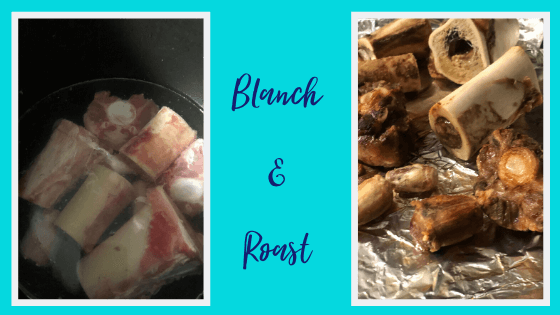
Sipping on bone broth may be a rising trend in our culture today, but it’s been around long before phrases like “leaky gut” and “auto-immune support” existed. If you talk with any elderly they would most likely have stories about sipping on broth when they were ill or using it to cook most anything with. Simmering beef, chicken, and turkey bones for long hours with herbs, vegetables and other healthful additives has been a staple in many cultures for a very, very long time. Our grandparents and great grandparents were most likely making it long before it was researched and proven to have such significant health benefits.
Bone Broth Health Benefit
1. Immune System/Digestive System Support – Gelatin helps protect and even heals the lining in the digestive tract. It aids in the digestion of nutrients in your body, decreasing leaky gut syndrome and improving overall nutrient absorption. This also aids in chronic fatigue.
2. Joint Support – Glucosamine supports a healthy inflammatory response in the joints by stimulating new collagen growth.
3. Hair & Nail Support – Collagen supports hair and nail growth. It’s a great beauty aid! (But the health benefits of collagen are more important) Collagen is the base materials for our cells which is integral to healing and regenerating cells.
4. Bone Support – Calcium, phosphorus and magnesium support our bones in growth and repair.
5. Muscle Support – Amino acids like proline help to build muscle.
6. Inflammation Reduction – Glycine, another amino acid found in bone broth, is very good or reducing inflammation and aiding with sleep.
How to Use Bone Broth
Many people use bone broth to cook with – it is a great way to make things like rice, quinoa, and vegetables. Most people use it as a stand-alone warm drink to sip in the evening. I love drinking a cup of bone broth in the evening as I am winding down, it’s sleep benefits are great for a restless person like me:)
What Types of Bones Should I Use?
When making bone broth, the bones matter. For the most collagen content you should try to get bones that have lots of connective tissue—feet, knuckles, necks, and backs. Oxtail, short ribs, and knuckle bones are all great marrow bones to use because they have a little meat on them. You can usually find these bones at any butcher shop – call ahead and ask so that you don’t waste time making a trip. Also, use bones from grass-fed, free range animals.
How to Make Bone Broth
Step 1: Blanch & Roast Bones: The best flavor from any bones is making by blanching and roasting the bones before adding them to the broth. Blanching your bones first will remove impurities that can make the taste go “off.” To blanch, submerge bones in boiling water for about 10-15 minutes. Blanching beforehand definitely results in a tastier broth. After blanching, roast bones by spreading them out in a single layer on a baking sheet. Roast at 425°F for 25-30 minutes, or until browned all over. If you are using leftover bones from a whole chicken or a roast you can skip the roasting step as the bones were already roasted when you initially cooked them.

Step 2: Soak: In a large pot, add in bones and drippings, apple cider vinegar, vegetables, and spices and SOAK. The apple cider vinegar helps to quickly break down the bones allowing the nutrition to be released. DO NOT SKIP THIS INGREDIENT! Add in the bay leaves, whole peppercorns, and garlic (if you are using it…. It’s your preference, I eliminate it as my belly cannot tolerate garlic and it sometimes becomes over-powering.) You can play around with the seasoning until you find your perfect recipe. After adding all to a large pot add filtered water, cover, and soak for approximately 30 minutes.

Step 3: Bring to Boil then Simmer: Cover the pot and bring to a gentle boil for about 20 minutes. Reduce heat to a very low simmer and cook with the lid slightly ajar. Skim foam and excess fat occasionally, for at least 10 but up to 24 hours on the stovetop. For safety reasons, never leave broth unattended or simmering overnight. The longer you simmer it, the better your broth will be. Add more water if necessary so that bones and vegetables are fully submerged. While simmering you want it to just be barely bubbling.
If you need more simmering time take the broth off, allow to cool to room temperature, store it in the fridge, and then restart the time again in the morning by bringing to a boil again then reduce heat to continue the simmering process.
Step 4: Strain and Store: Strain your broth by using a fine-mesh sieve and pouring it into jars or Tupperware for freezing. You will notice a layer of fat will solidify on the top – feel free to skim this off and use to cook with or mix back into the broth when you heat it up.
Tips: Throughout the year keep any vegetable scraps by tossing them into a freezer Ziplock bag – as you are making bone broth you will already have the veggies you need! Money saver! YAY! If you’d like to make your beef broth a bit more rich in flavor you can add in 2 tablespoons of soy sauce or coconut aminos, 1 cup roughly chopped mushrooms, and about 2 tablespoons of tomato paste. This gives an alternative recipe to enjoy.
Personal Benefits:
As with any health aid – the benefits from drinking bone broth vary among those drinking it. I can only offer my personal benefits…. And I am very aware of how EVERYTHING I eat and drink affects my body as I do my job to track it all. When I first began investigating my body after diagnosed with an auto-immune disease I knew the importance of learning what foods affect my body both positively and negatively. When I keep up with my daily bone broth habit, I feel noticeably less achy and less stiffness in my knees, hips, hands and back. I have also noticed a difference in my fatigue – anyone who has an auto-immune disease can struggle with chronic fatigue daily. Bone broth has assisted in my digestive system which directly influences my energy levels. Sleep is also very tricky with an auto-immune… it is often difficult to get a good night’s sleep because of pain and inflammation. By drinking bone broth in the evenings I am more likely to get some good rest. I have noticed that like many other health aids, bone broth is a cumulative effect for me. If I drink it consistently the benefits are far greater than if I have a cup every now and then. I shoot for at least one cup daily, but usually sip on two per day. Hope you find your perfect bone broth recipe and enjoy!
(*ok, because I have to…. Disclaimer… I am NOT a doctor nor a registered dietician, all content in this post is from personal experience and/or research I’ve read)
Troubleshooting Bad Tasting or Looking Bone Broth:
Cloudy/Milky Looking Bone Broth – Bone broth can have a milky or cloudy appearance when it has been cooked at too high a temperature for too long. It is still perfectly ok to drink and will still taste delicious. Next time, just lower the temperature a little bit.
Frothy Broth – Foam on the top of cooking broth is just impurities in the bones coming out. Just take a slotted spoon and scoop it off. I’ve noticed that I see almost no foam when I use bones from pasture-raised/grass-fed animals.
Broth Has Odd Flavor – If you’ve skipped the roasting/cooking/blanching the bones beforehand you may notice a strange flavor. This step is very important and is the number one reason for a funky flavor. Also, makes sure you get the best quality bones from animals that lived a good life.
Bone broth didn’t gel! Ugh-O….. All that hard work and the bone broth didn’t gel? Come on man! Hahah No worries… it’s still packed with nutrients even if it’s not super high in gelatin. Make sure you are always using bones with connective tissues: feet, knuckles, necks, backs, etc… Also, chicken feet will help with this problem, too.
Ingredients:
- 4-5 pounds chicken, turkey, pork, beef, lamb, or other bones
- ¼ cup apple cider vinegar – the acid from the apple cider vinegar draws out the collagen from the bones (don’t skip this ingredient)
- 4 cups roughly chopped carrots and celery (or scraps)
- 2 medium onion quartered
- 2-3 bay leaves
- 1/2 teaspoon whole black peppercorns
- 1 garlic head, halved crosswise
- 1 teaspoon sea salt
- 6-7 quarts unfiltered water



